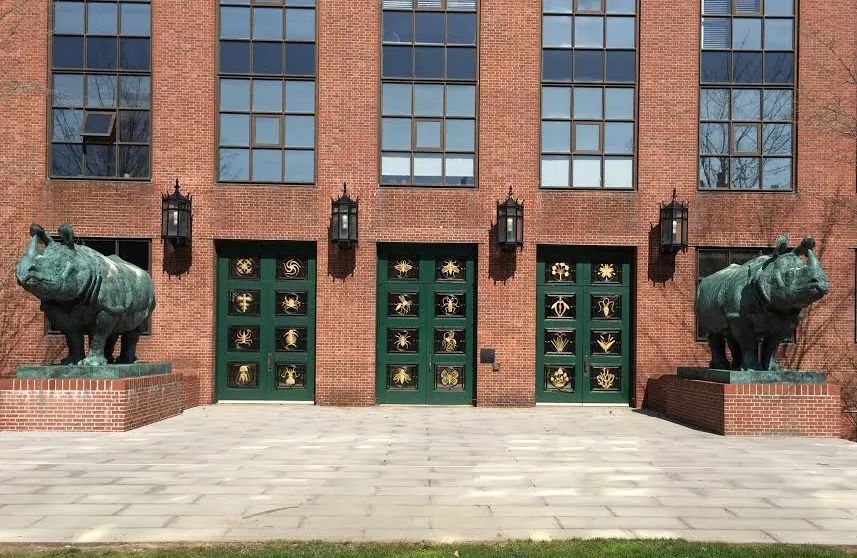
Weekly Gem #75 Warts and all
Published 6/12/2016
Location: This pair of 'hidden gems' is located at 16 Divinity Ave., Cambridge, MA (see Clue Me! Map). Katherine Weems was noted for her highly accurate animal sculptures, and these two are 'beautiful' representations of her skill.
Bessie and Victoria are nearly identical to each other and to their Indian Rhinoceros brethren in the wild. It’s not just the artistic detail, which is beyond impressive. There’s a realism and a 'feel' that comes across when you get up close. Here you'll see a pair of content rhinos (as conveyed by their body language, facial expressions, and relaxed prehensile lip), bellies full, perhaps heading for a soak in the pond during the heat of the day.
Though rarely visited except by students, they are most definitely worth a visit on your next visit to Harvard.
Look them over and notice the details. See how big they are? That’s how big they are.
It’s hard to realize their size in the photo until you compare them with the doors. Or, here’s a perspective from the clay model (click the photo to enlarge). Compare, between the artist and the sculpture, the size of the head, the foot, the forearm, and the ribs. (And presumably, intestines ... read on)
In their native lands of northern India and Nepal, these rhinos are very important for forest restoration. Like many birds and bats, they eat seeds 'here,' and spread them to 'there.' Unlike birds and bats, their piles of #2 weigh over 50 pounds. Picture the volume of 7 gallons of milk, all in one go. These rhinos tend to leave their droppings in a smallish area, creating very fertile areas from which the seeds in their droppings grow into new forest, which then provides habitat for all manner of wildlife.
Coming back to the sculptures. When you visit in person, you will see and feel Weems' success in reproducing these royal ladies, right down to the fuzzy tips of their ears and tail … other than these tufts and the fluttering eyelashes, their skin is hair free, and smooth as a baby’s … well, in truth, a little lotion might not hurt.
.........
Here's the hidden gem entry from our Clue Me! map.
Clue
These two Ivy league rhinos are queens
Description
Two life-size Indian Rhinoceros statues guard the doors to the School of Cellular and Molecular Biology.
Why It's Interesting
The statues of Bessie and Vickie were sculpted by Katherine Lane Weems, a Boston native who began her artistic career in the first half of the 20th century. Back then women were often barred from art schools and thought to lack the strength and stamina to sculpt big works. Ms. Weems distinguished herself by focusing on statues of animals. Bessie and Vickie are named after Queens Victoria and Elizabeth and were unveiled on May 12, 1937, the coronation day of King George VI.















